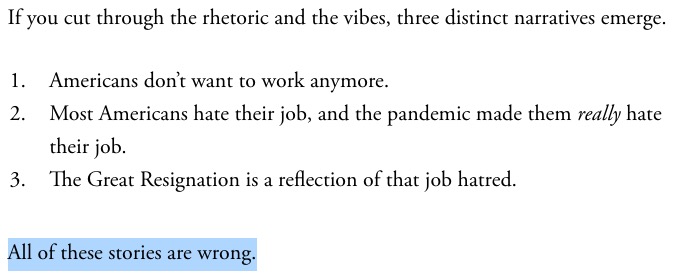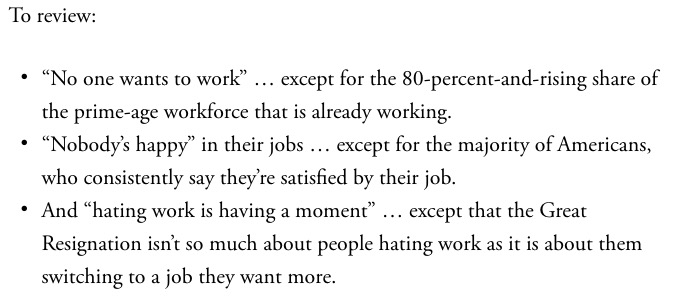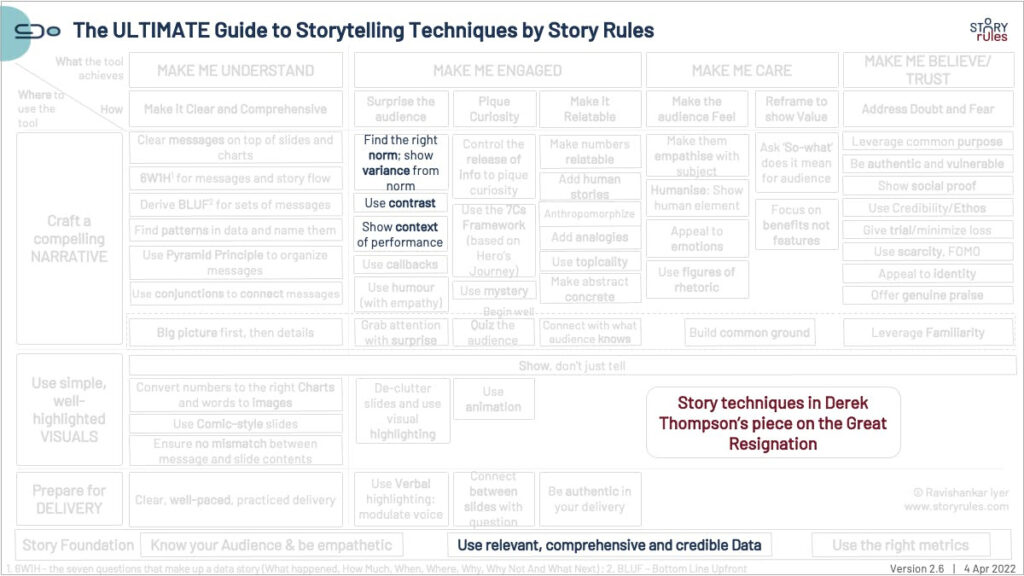#SOTD 37: Myth-busting using the right data and norms
It’s fascinating how often narratives which have no basis in facts, capture the public imagination.
One such narrative is that of the ‘Great Resignation- the spate of resignations seen by companies across industries, especially in the US.

Various reasons are being put forth for this exodus away from jobs: People hate their jobs, working from home made them realise the futility of commuting, people are looking for meaning in what they do etc.
But hang on, says Derek Thompson in a recent article for The Atlantic. Let’s look at some data first.
(hat-tip – J Ramanand for highlighting the piece)
I love how he uses contrast to get the audience’s attention (emphasis mine):
Then he proceeds to bust these myths with data.

For instance:
The first one is the easiest to debunk. No one wants to work anymore? Well, the unemployment rate is under 4 percent. More than 80 percent of prime-age workers are employed or looking for work. The labor-force-participation rate for workers ages 25 to 54 is now higher than it was for most of the Obama administration. These facts don’t describe a country where “no one” wants to work. They describe a country where almost everybody wants to work, and where many nonworkers—including many mothers and caregivers—“desperately” want to get back to work but can’t.
Here’s how he concludes his piece:

Some of the simple storytelling techniques Derek Thompson uses are:
- Look for the right and credible data
- Compare numbers with the right norm
- Use contrast in writing
#SOTD 37
PS: Here is the context for #SOTD and the ‘Ultimate Guide to Storytelling Techniques‘ framework I use – in case you joined this series late!









